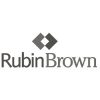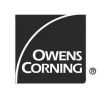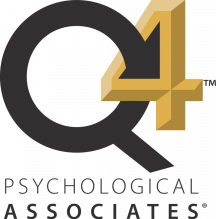You have your strategic vision. Now how do you execute it? Or, as Jim Collins put it in Good to Great, how do you get the right people on the bus to carry out your strategy? We’ll lay out a 7 step plan.
How Do You Get the Right Person on the Bus
As leaders, we sometimes forget that our organization’s goals must be translated into actions that will achieve those goals. It’s not enough to know where your organization is going. Once you create a worthy vision, clear mission, and sound values, common sense says that some other vital changes must take place. Naturally, the more profound your course correction, the more profound the changes will be. But, in regard to human resources, a logical sequence of steps must take place before you can progress toward your corporate mission. Once purpose and direction have been established, the next step is to make sure your people have the appropriate competencies.
To get your organization where it needs to be, your people must have suitable skills and knowledge. Their competencies must be tied to the needs dictated by your new strategic direction. Simply stated, your people must have what it takes to get you where you want to go.
We propose seven common-sense steps to assure any organization that its people have “the right stuff.”
1. Initiate competency development
First, determine the competencies required in key leadership and individual contributor positions. As you clarify or redefine the organization’s purpose, it’s natural to ask what work is really vital to the new direction. To do that work, what skills, special knowledge, or competencies are required? Using a process called “competency profiling,” you can determine your staffing and development needs now and in the future. The process can establish a set of “competency criteria”.
Each key position can be matched with a suitable job candidate, laying groundwork to get the right people on the bus. You can assess current job slots to determine if they need to be enlarged, diluted, redesigned, or eliminated. What results is a new structure with new jobs, or existing positions that have been tailored to meet the needs of your new purpose and direction.
2. Evaluate current employees against the “competency criteria” determined during the profiling completed in step one
Assess the key people within your organization, an inventory of the knowledge and skills you currently have on hand. Some organizations review past performance appraisals to assess each candidate’s strengths and developmental needs. However, these reports should be used cautiously, since they often contain information that is imprecise or obsolete. If possible, gather data through 360º feedback surveys, which provide more accurate and current information. Assessments conducted by organizational psychologists can also furnish insight into how well an individual’s skills and characteristics “fit” the new competency requirements. 360 surveys and assessments are helpful tools to get the right people on the bus.
3. Determine which incumbents have the competencies and those who “do not”
At this stage, you know what you have and what you need. By comparing the two, you can isolate those individuals who come close to matching your competency profile from those who do not. A few incumbents will be highly competent, already possessing the specific skills needed to handle new roles and jobs. This group has a definite seat on the bus. The current level of development for those remaining, however, will not measure up to the new standard. These individuals are the “do nots.”
4. Divide the “do nots” into those who are “developable” and those who are not
Not every “do not” is a “can not.” Just because they lack the right skills doesn’t mean they can’t learn them. At this point, identify the people in your organization who can develop the competencies you require. These employees also have a seat on your bus. Keep in mind, however, that all personal progress and improvement ultimately result from an individual’s willingness, if given the opportunity, to learn new and more effective ways of doing things. In other words, all development has to be self-development. To evaluate development potential, we must look at the factors that influence an individual’s learning ability.
Brain power
One indication of intelligence is the ability to take in and use data. Research and testing show that amount of intelligence may account for up to 50 percent of the ability to change. “Brighter” individuals are faster learners and more likely to replace old patterns with new ones.
Ingrained patterns of behavior
Habits that have been rewarded for years are more difficult to break than less well-practiced ones. For instance, part of learning a new golf swing to improve our game requires that we “unlearn” our old swing. If something we do has worked for us in the past, we find it difficult to give it up.
Individual personality and style
Some personality traits favor learning new skills. Other traits inhibit learning. Some people are not open to new learning because of rigid thinking patterns or strong prejudices.
Presence or absence of rewards
The organization can actively enhance the success of any training program by rewarding success. The bigger the reward, both tangible and intangible, the more motivated a person is to learn.
Presence or absence of performance feedback and tracking methods
It’s human nature for people to want feedback about their progress, particularly when being trained in a new skill. Rewards themselves (or lack of them) are a feedback device signaling the answer to the questions “Am I on track or not?” and “Am I doing it right?” There are, however, a number of other ways that an organization can provide training feedback.
Types of Feedback
• Self-observation requires workers to have a very clear idea of expectations so they can tell themselves how they are doing.
• Boss appraisal and coaching are traditional but effective when presented in a specific and timely manner.
• Peer rating allows coworkers or peers to evaluate an individual’s learning progress. This is useful in team situations or when coworkers are in a better position to judge performance than an individual’s supervisor.
• Performance tracking of training events attempts to measure how successful or valuable formal training is for workers who are learning new skills.
• 360 feedback gathers performance information not only from the boss, but from peers, direct reports . . . even customers are asked about a person’s performance.
5. Establish appropriate development plans for those who qualify
Using the same data you used to identify incumbents who can be developed, it is also possible to determine the size of the gap between each individual’s current level of competency and those of the new profile. With this information, you can create learning programs to develop the basic competencies among those who lack them, as well as programs to help those with higher competency levels develop even greater skill levels. Don’t stop at the “requirement” level when developing your people — set expectations beyond the minimum.
6. Separate the “do not’s” with low development potential from the organization
There’s no nice way to say this. It is time to separate the chaff from the wheat. Some people can still “make the cut” by being shifted into a position that more closely matches the competencies they possess. They will join the other developable candidates. For the rest, however, who not only lack the competencies you require, but also exhibit no interest or willingness to learn, it is time for them to leave the organization. When possible, outplacement help should be offered. Exiting the wrong people off the bus helps get the right people on the bus.
7. Implement Competency Based Hiring
Ideally, you now have an organization where every employee’s skills and knowledge are congruent with the competencies needed to help accomplish your new mission. And, having gone through the process, you now have a valid profile for the types of people your organization needs. By using your competency profile during employee selection, you’ll be hiring people in the future who can help you get to where you want to be.
The Right People
When you put people in the wrong jobs, you fail to capitalize on their talents, while they fail to realize job satisfaction. A worker’s inability to do the job results in destructive tension. Attitude and morale may degenerate, disrupting others.
On the other hand, when you achieve the right “fit” between employee and job, the foundation of your organization is now established on your greatest strength — the skills and knowledge of your people. In turn, you focus positive energizing tension where it will do the most good by providing your employees with an opportunity to learn and grow.
Follow these 7 steps and you’ll not only get the right people on the bus. You’ll get your strategic vision effectively executed as well.
Download This Whitepaper – 7 Steps to Competency
To download this whitepaper, please fill out the form below and we will email it to you.












